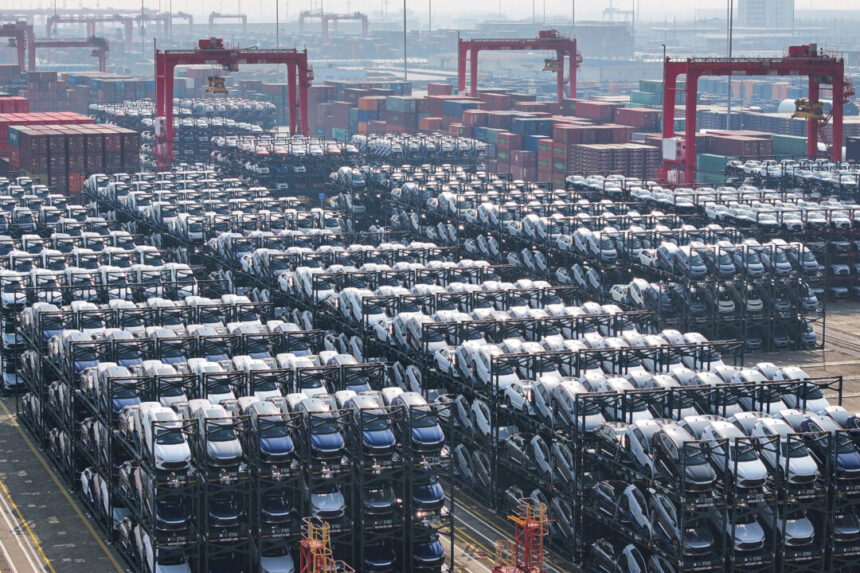Commentary
The latest reports from the financial press indicate that China is shifting its lending policies once again, moving away from troubled real estate and local land development back towards manufacturing. This decision is not driven by the market, but rather by the Chinese Communist Party (CCP) and implemented by the central bank. The main target of this shift is American manufacturing, electric cars, and “green energy” sectors such as solar panels.
In essence, the CCP is reverting to a playbook that has proven successful over the decades: utilizing leverage capital, much of it in the form of secure U.S. debt, to undercut U.S. market advantages. This strategy has historically been effective and is likely to succeed once again, putting pressure on the United States to either surrender its industry or resort to trade barriers and tariffs.
There was a time when American politics focused on restoring competitiveness, particularly in the late 1980s when Japan’s success in various industries raised concerns. However, the problem only escalated with the emergence of competition from China, Mexico, Vietnam, and other countries. The United States witnessed the loss of numerous industries to foreign competitors, leading to a transformation from a nation that produced goods to one heavily reliant on medical and financial services.
The trade deficit numbers tell a stark story, showing that the United States has not seen a merchandise trade surplus since 1976. This prolonged deficit has reached a staggering $100 billion, highlighting the challenges faced by American industries.
It’s crucial to recognize the underlying issues behind such trends and avoid oversimplifying the situation. Viewing it as just a consequence of free trade or advocating for tariffs as a solution overlooks the complexity of the problem. To grasp the root cause, one must delve into the history of free trade and understand concepts like the price-specie flow mechanism.
This historical perspective sheds light on the intricacies of trade theory and why simplistic solutions like tariffs may not address the underlying structural challenges faced by American industries in the global marketplace.
Prices and wages decrease in the importing nation, leading to increased competitiveness in manufacturing for export. On the other hand, the exporting nation experiences price hikes due to a higher money stock, resulting in price pressure that favors importing.
This ebb and flow of trade balances prevented trade deficits from becoming persistent in any single country. This is why renowned free-trade economist Frédéric Bastiat advised against focusing on international balance of payments, as they naturally regulate themselves. The key factors for maintaining this balance include limits on money-stock expansion, a domestic price level that adjusts to market conditions, and a dynamic economy capable of adapting to changes.
The concept of the price-specie flow mechanism highlighted that market principles apply universally, both domestically and internationally. Supply and demand adjust to achieve a productive equilibrium without causing harm. The shift away from this system began in the 1970s when the gold standard was replaced by the paper dollar standard, with the US dollar serving as the world’s reserve currency.
As a consequence, the US became a net importer over time. The unrestricted expansion of money and credit, coupled with the international demand for the US dollar, led to a scenario where imported dollars were not repatriated but used as reserve assets by central banks worldwide. These funds were utilized to develop industries that competed directly with US manufacturing, particularly in countries like Japan and China.
The trend of increasing foreign-owned debt in the US has continued, fueled by unbalanced budgets and inflationary monetary policies. This perpetual cycle hampers the competitiveness of the US export sector on the global stage. Addressing this issue requires balancing the budget, curbing debt accumulation, and reducing the global demand for the US dollar.
While the complexities of these economic forces may seem daunting, the solution lies in restoring balance to the monetary systems that underpin international trade. Free trade itself is not flawed, but the misuse of monetary policies has had detrimental effects on traditional American manufacturing. By rectifying these imbalances, the US can reclaim its position as a beacon of prosperity and freedom on the world stage. Please provide an alternative version of the text.
Source link




